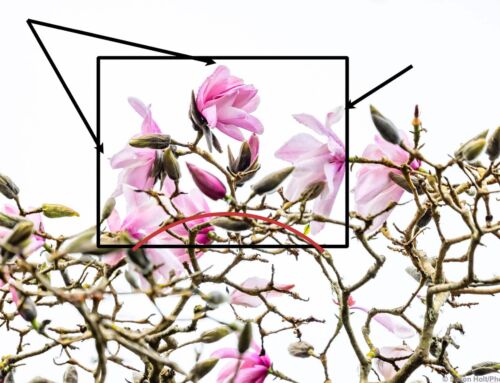As the sun approaches its lowest arc of the year I start to bend the rules of not taking pictures in bright light. Back light is always dramatic and is something to take advantage when the sun never gets high in the daytime sky.
Even at mid day the sun is relatively low and these beautiful Western Red Cedar trees (Thuja plicata) in Tilden Regional Parks Botanic Garden at the edge of the Redwood Section, positively glow in the back light, the camera exposed for the bark, not the overall shady woods.
A camera’s exposure meter is set to average the highlights and shadows, and it is the photographer that decides what is the most important area that needs optimal exposure. A midday photo in the summer would never get this glow, as the bright sunburst would be too high; so it is fun to break the rules. Use the bright light beyond.
Another wonderful thing about winter sunlight is the long shadows it can create. Deciduous trees make strong patterns, especially in the early morning when the sun is quite low.
Almost every morning I walk my dog Kona, often in the Blue Oak woodlands near my house. (Instagram #walkswithkonadog @saxonphoto). Since we’ve already had some really nice early rains, the grasses have returned, so lush. Still short, the grass provides a wonderful green canvas for the dark shadows in the morning light.
As in the previous photo of the Western Red Cedar in the Botanic Garden, the camera will automatically expose the scene with “average” light value, but I don’t want the average, I want the bright light, so I overexpose the meter’s suggestion, blowing out the highlights.
More lessons on using light in Light In The Garden section of Living Books.
Gallery of Light in the Garden in PhotoBotanic archives.











Leave A Comment